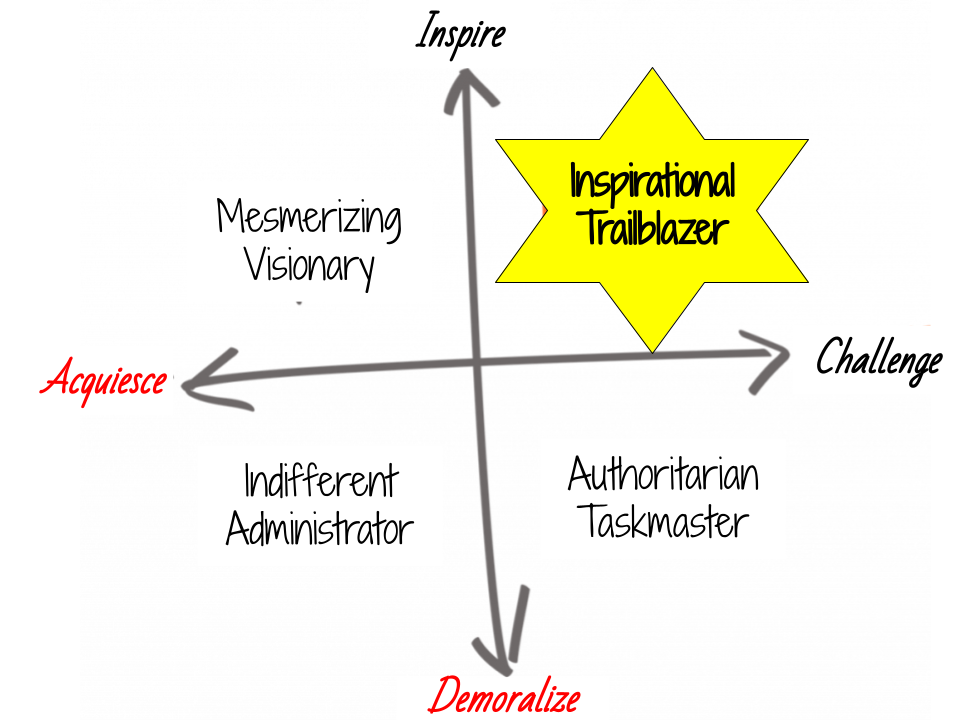The breakneck speed of innovation in the artificial intelligence sector has naturally steered my writing towards AI-centric themes on this blog. Regular readers, however, will recall that my passion for leadership and management is a drumbeat that resonates through my work. Posts like “The 7+1 Habits of Highly Successful Leaders” and “Cultural over/under-fitting and transfer learning. Or why the “Netflix Culture” won’t work in your company” have not only been popular but also personal milestones that reflect my ongoing exploration into what makes a leader truly effective. In the following paragraphs, I unveil a simple, yet robust framework for leadership that I believe is pivotal for today’s dynamic environment where technology and human ingenuity intersect. Your thoughts and feedback are not just welcome, they’re invaluable.
Frameworks for Leadership: Standing on the Shoulders of Giants
No discussion on leadership is complete without the due diligence of examining existing frameworks, many of which I’ve dissected in previous posts such as “The 7+1 Habits of Highly Successful Leaders”. Among these, the model introduced by Kim Scott in her seminal work, Radical Candor, resonates deeply with me. Scott elegantly places ‘Challenge’ and ‘Care’ on intersecting axes, proposing a quadrant that categorizes leadership styles. This model serves as a beacon for my own framework, which I will introduce shortly, and has profoundly influenced my understanding of effective leadership. Before diving into the new model, I encourage those unfamiliar with Scott’s work to explore her two-dimensional framework, as it’s a powerful tool for self-reflection and leadership development. It has certainly shaped the way I approach my role and responsibilities as a leader.

Reassessing Radical Candor: The Dichotomy Presented by Musk and Jobs
The Radical Candor model has been a compass in navigating my leadership decisions and coaching strategies for years. Yet, I’ve encountered a persistent dissonance between the model and the real-world examples of certain iconic leaders. This dissonance crystallized for me after delving into the biographies of Elon Musk and Steve Jobs. These two titans of industry share much more than a biographer; they are paragons of successful leadership that seemingly operate outside the Radical Candor framework, particularly in the dimension of personal care.
Now, I must clarify that this observation is not an endorsement of their reputed indifference to personal relationships. On the contrary, I hold personal care in leadership in high regard and admittedly, would not choose to work under leaders like Musk or Jobs for that reason. However, the undeniable success they have achieved forces us to question: if a leadership framework aims to chart a path to success, then perhaps personal care, as defined within the Radical Candor framework, is not the sole axis we should consider.
It’s important to note that while Musk and Jobs might challenge the notion that personal care is critical for leadership success, their approaches are not prescriptive. Instead, they serve as a reminder that leadership effectiveness can diverge significantly from established frameworks, and that success can be multifaceted and complex. It’s this complexity that has led me to develop a framework that strives to encapsulate a broader spectrum of leadership qualities, beyond the binaries of care and challenge.
The Paradox of Challenge: Is it the Sole Ingredient of Leadership?
Upon reflecting on the previous sections, one could hastily surmise that the essence of leadership boils down to the relentless challenge of one’s team, pushing them towards peak performance. Yet, this reductionist view doesn’t capture the full spectrum of what leadership entails. Is it truly enough to challenge? Certainly not, according to Kim Scott, and I concur with her assessment. A leader who offers only challenges becomes what Scott dubs an ‘Obnoxious Aggressor’ – or, in less flattering terms, an authoritarian taskmaster. This is a leadership style characterized more by dictation than inspiration, more feared than revered.
The reality is stark: few, if any, aspire to be led by someone who merely drives them relentlessly without providing other forms of value. Caring might offer a counterweight to the challenge, yet as we’ve considered in the context of outliers like Musk and Jobs, it isn’t the singular antidote to authoritarian leadership.
So we’re left pondering a critical question: If not solely care, then what other dimension is integral to the leadership equation? What is the X factor that complements the challenge to not only drive success but also inspire commitment and loyalty? It is this quest for the missing dimension that has propelled me to explore beyond the conventional, leading to the development of a more nuanced leadership framework.
The Pivotal Role of Inspiration in Leadership
I offer a perspective that may well be the linchpin in leadership dynamics: a leader’s capacity to inspire is not just an asset, it’s a necessity. Inspiration is the catalyst that allows a leader to challenge their team effectively. The more a leader can inspire, the more their team will not only accept challenges but also embrace and even relish them.
Reflecting on our previous examples, Jobs and Musk stand as testaments to this idea. Regardless of whether their particular brand of inspiration resonates with you, it’s difficult to dispute their inspirational impact on many. For those who aren’t moved by their visions or methods, the prospect of being challenged by them might seem unappealing, and rightly so. This aligns with my own stance; while I recognize their inspirational influence, it doesn’t sufficiently outweigh the challenges I foresee in working with them.
Inspiration itself is a multifaceted phenomenon, varying immensely from one person to another. Some are galvanized by lofty ambitions to revolutionize the world, others by the desire to aid their fellow man, and many by love or, indeed, personal care. In this light, “caring personally,” as Kim Scott articulates, can be seen as one avenue of inspiration. It’s also crucial to acknowledge that what leaves us cold may ignite passion in others—consider the varied reactions to figures like Trump, for example.
From this discourse emerges a principle: as a leader, you not only need to inspire but also recognize that you will naturally draw individuals who resonate with your particular brand of inspiration. A nurturing leader will attract those inspired by empathy, while a visionary will magnetize those drawn to ambitious goals. The imperative for leaders is to introspect and identify their inspirational core. Whether you embody care, vision, or another inspiring trait, understand that your ability to challenge will be proportionate to the inspiration you provide in the dimension that matters to your followers. Thus, a person drawn to your leadership for your empathy will not necessarily be more receptive to challenges because of your visionary ideas.
Synthesizing the Challenge-Inspire Leadership Model
Leadership is fundamentally rooted in two pivotal elements: the ability to challenge and the power to inspire. It is at the intersection of these dimensions where true leadership flourishes. As a leader, one must master the delicate art of weaving inspiration into the fabric of challenge. The more profound the inspiration you provide, the higher the performance you can elicit from your team. This isn’t a one-size-fits-all; different individuals resonate with different forms of inspiration—be it a shared vision, a compelling mission, a dedication to excellence, or a nurturing environment.
The diagram presented below delineates this philosophy. It illustrates a leadership landscape where ‘Inspirational Trailblazers’ stand out. These leaders do more than just demand results; they instill a sense of purpose and enthusiasm that transforms challenges into opportunities for growth and achievement.

At one end of the spectrum, we find the Indifferent Administrators who lead without challenge or inspiration, resulting in stagnant teams. Then there are the Authoritorial Taskmasters, those who constantly push but fail to motivate, creating an environment of stress and burnout. Or the Mesmerizing Visionaries who inspire but don’t drive their teams toward concrete goals, leading to untapped potential. It is only the Inspirational Trailblazers, who combine challenge and inspiration, those that are true leaders.
The model I propose strives for the sweet spot: a harmonious blend of high expectations with deep inspiration. It’s in this space that leaders can truly galvanize their teams, attracting and nurturing individuals who share their inspirational language. This is not just about leading; it’s about creating a legacy of motivated, high-achieving teams that thrive on challenges because they believe in the vision they’re working towards.



